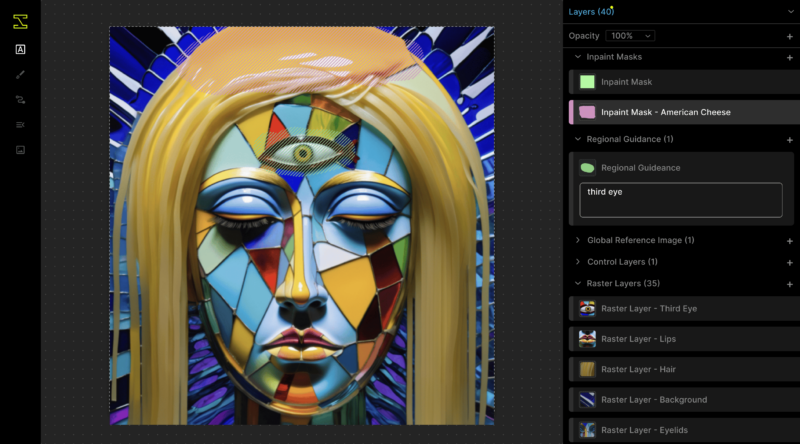This is the First-Ever AI Image to Be Granted Copyright Protection

A company has secured the first-ever copyright protection for an artwork entirely generated by AI from the U.S. Copyright Office.
Kent Keirsey, CEO of Invoke, demonstrated to the U.S. Copyright Office that he had inputted enough human creativity into the image to warrant protection.
Invoke is a generative AI platform for professional studios to create visual media. Keirsey used Invoke’s inpainting features to iterate upon an AI-generated image, coordinating and arranging where to inpaint and then selecting from multiple options to create a composite work which he calls A Single Piece of American Cheese. He added roughly 35 AI edits to the AI image.

Invoke filed an application with the U.S. Copyright Office last year to register the piece, claiming rights for the selection, coordination, and arrangement of the inpainted components of the composite image, but not the individual AI-generated segments.
Keirsey smartly used the office’s own guidelines which maintain that protection will only be afforded to works that have meaningful human authorship — purely AI-generated content will not be eligible. However, AI-generated content that contains evidence of a human’s creative choices can still qualify for protection.
“Despite previous failed attempts by artists to secure copyright using other AI image generation tools, Invoke was able to secure copyright protection by proactively combining human creativity with AI-assisted image generation, and by documenting the creative techniques that Keirsey used inside the Invoke platform, many of which are not possible in simple text-to-image generators,” says a press release.
“He recorded every decision, direction, and use of Invoke’s features, demonstrating how he transformed an initial prompt-based work into an original work guided by human creativity. He was able to use this record to demonstrate to the Copyright Office that A Single Piece of American Cheese is a work of human authorship.”
In a letter to Invoke, seen by PetaPixel, the Copyright Office says it decided to register the company’s copyright claim “because we find that it contains a sufficient amount of human original authorship in the selection, arrangement, and coordination of the AI-generated material that may be regarded as copyrightable and, there, supports a copyright registration.”
The office initially rejected Invoke’s application but after viewing a workflow video (below) showing how Keirsey created the image, it changed its mind. Essentially deeming that all the different AI elements coming together as a “single, unified image” exhibits sufficient creative authorship to warrant registration.
“We saw a need from both our customers and the industry at large – artistic work needs copyright protection and clarity on how to leverage emerging tools to produce protectable creative outputs. While I’ve always believed images created using the creative control capabilities of Invoke meet the U.S. Copyright Office’s standard for human authorship, we needed definitive guidance from USCO for our customers to feel confident incorporating AI into their production workflows,” says Keirsey.
“With this precedent and our continually evolving Provenance Records tool, we’re making it easier for creatives and businesses to prove the elements of human authorship that have been shown to assist in securing copyright protection, by embedding that data directly in the image. This clears a major hurdle to industry-wide adoption.”